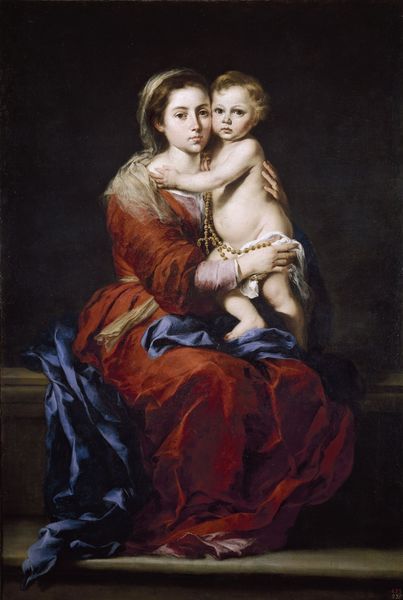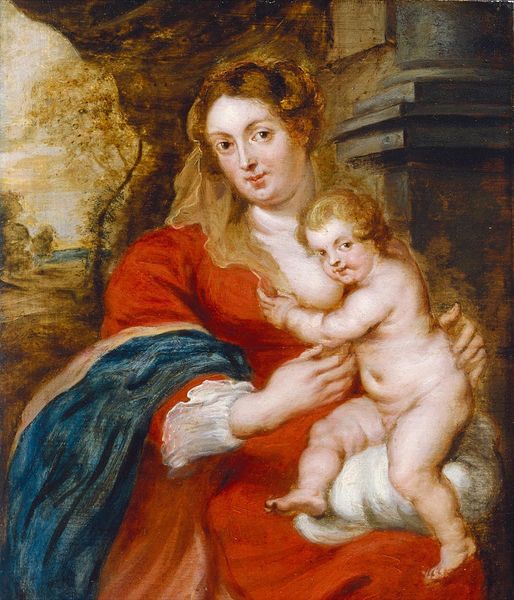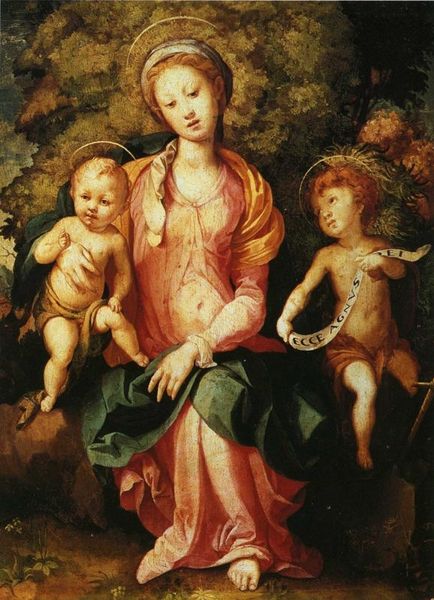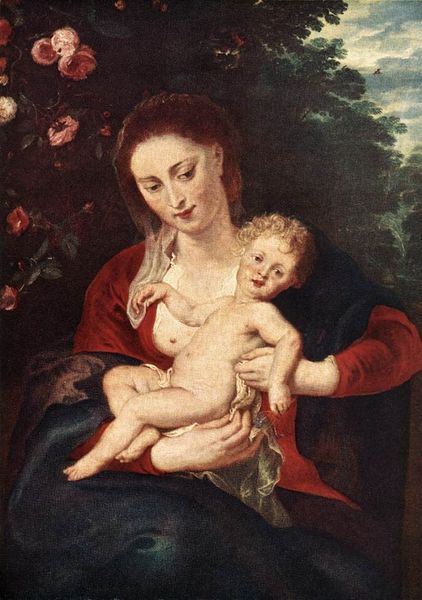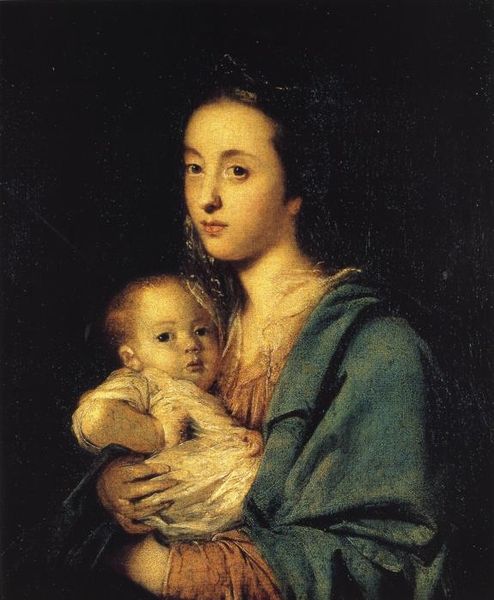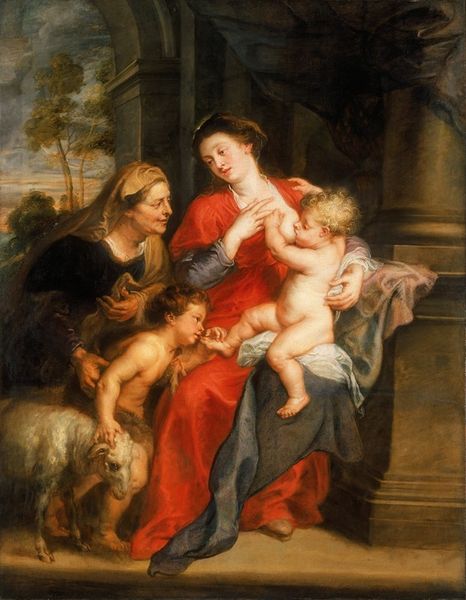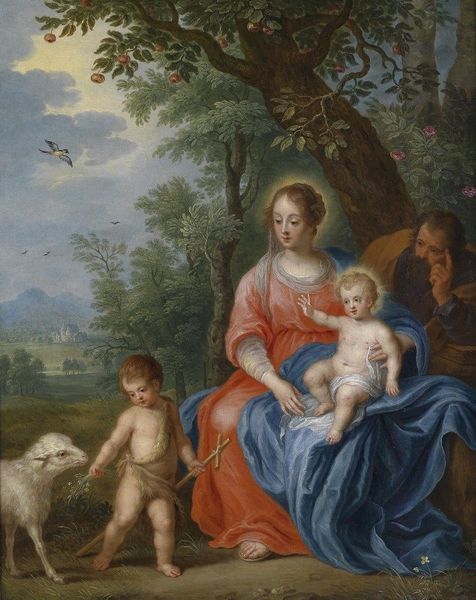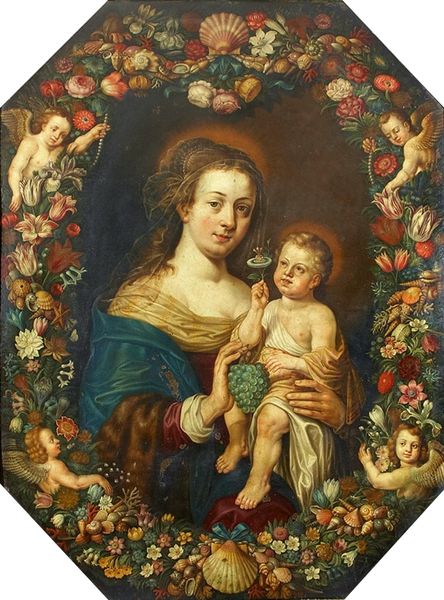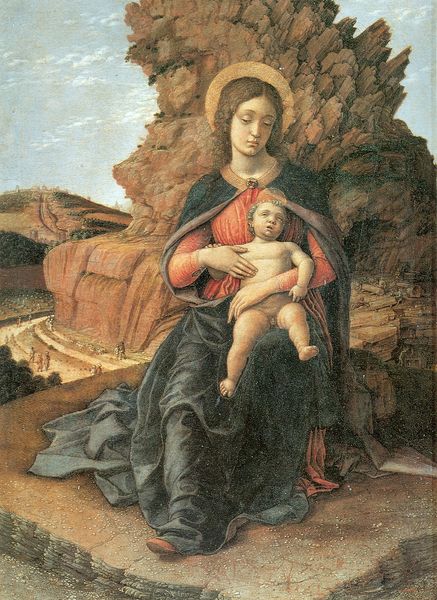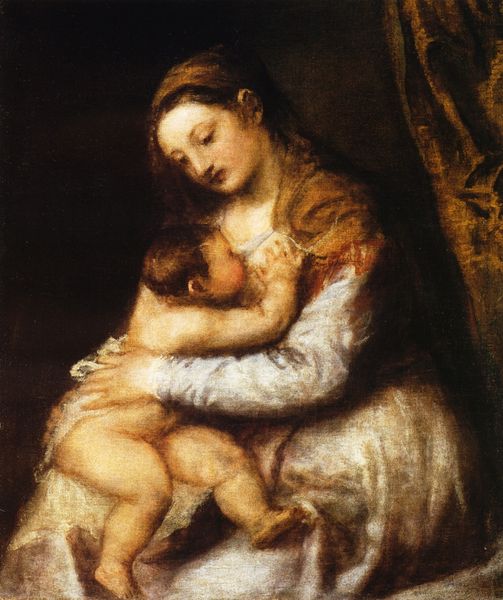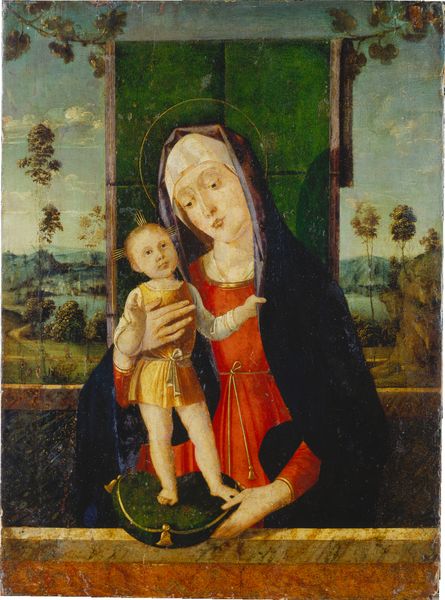
painting, oil-paint
#
portrait
#
baroque
#
painting
#
oil-paint
#
figuration
#
oil painting
#
history-painting
#
academic-art
#
italian-renaissance
#
portrait art
Copyright: Public domain
Hans von Aachen painted this Virgin and Child, but the date is unknown. The painting situates the mother and child within an idealized landscape, a common trope in Renaissance art. However, it also embodies the cultural and religious tensions of 16th-century Europe. Aachen, working in the midst of the Counter-Reformation, portrays the Virgin Mary in a way that reinforces her purity and divine role, a direct response to the Protestant Reformation’s challenge to these beliefs. But it is the humanity that Aachen brings to the representation of Mary that intrigues. The tender embrace and her gentle gaze directed towards the child feel deeply personal. She is not just an icon, but a mother, experiencing a profound and universal bond. This intimacy invites viewers to connect with the divine on a more human level. The painting speaks to enduring themes of faith, motherhood, and the search for personal connection within prescribed religious narratives.
Comments
No comments
Be the first to comment and join the conversation on the ultimate creative platform.
